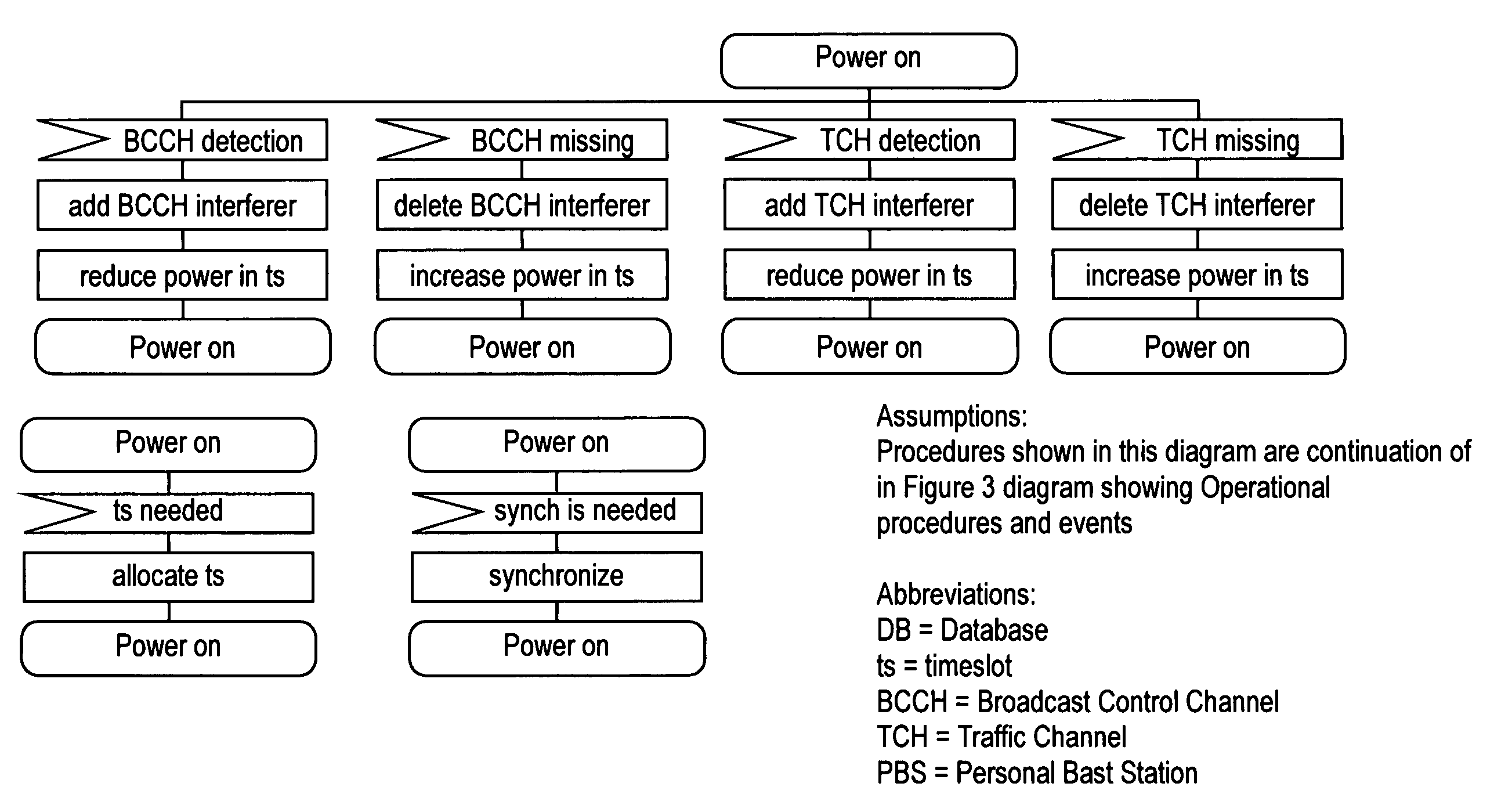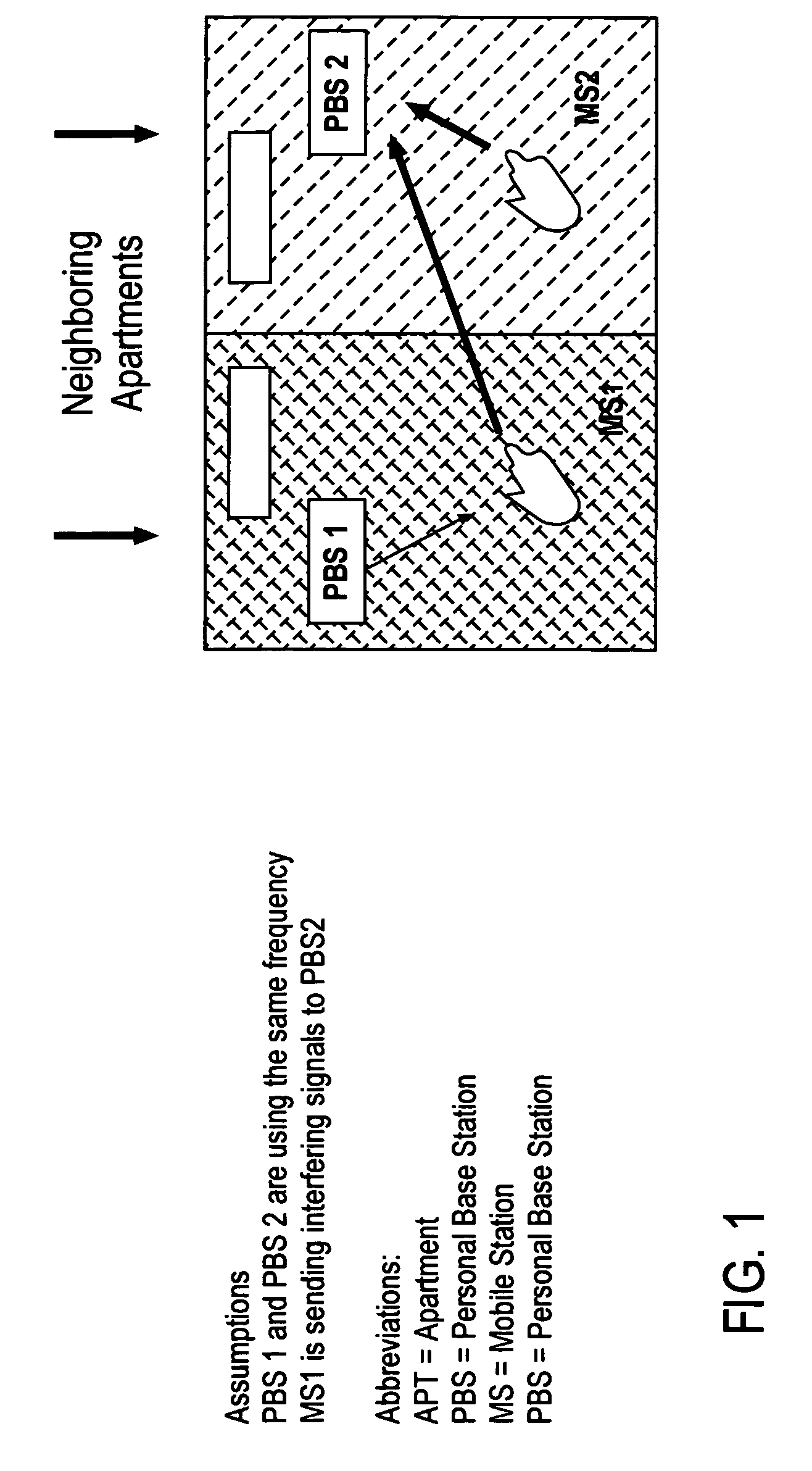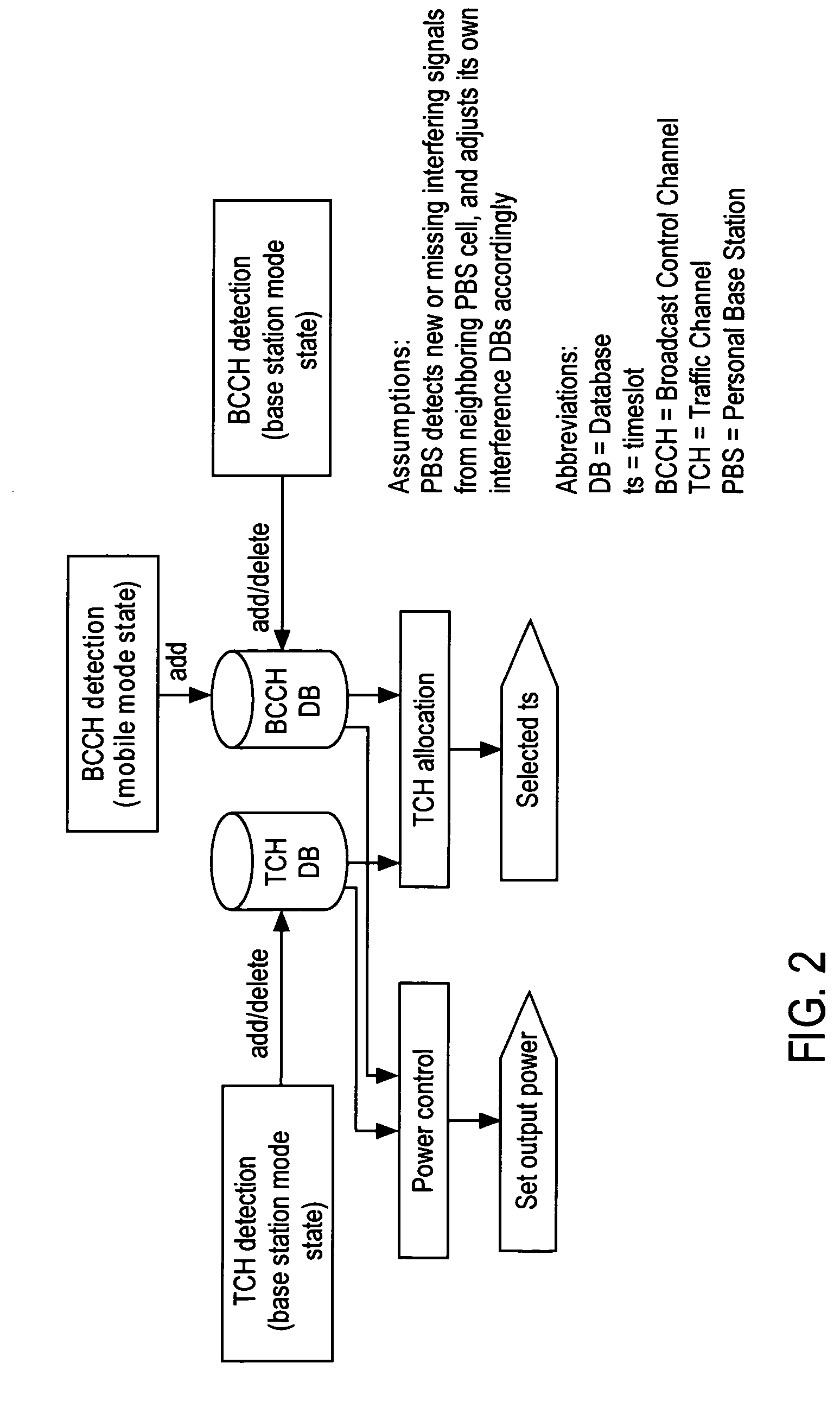Base station interference control using timeslot resource management
a technology of resource management and base station, applied in the field of radio or wireless communications, can solve the problems of not always feasible, most carriers do not own enough additional frequencies to implement the unused frequency strategy, and the frequency is typically unusable, so as to reduce the number of frequencies required
- Summary
- Abstract
- Description
- Claims
- Application Information
AI Technical Summary
Benefits of technology
Problems solved by technology
Method used
Image
Examples
Embodiment Construction
[0041]Introduction
[0042]U.S. application Ser. No. 10 / 280,733, filed Oct. 25, 2002 and having common assignee, proposes a portable, low power base station configured to convey wireless traffic between a mobile base station and a conventional wireless network via the Internet. The base station may be referred to as a “personal” or “pico” base station (“PBS”), and is configured to connect to the Internet at a user-selected location and establishes a small area of wireless coverage within a greater macrocell network. The user sets the operating parameters of the base station. U.S. application Ser. No. 10 / 280,733 is incorporated by reference, and its subject matter has been published in corresponding International Publication No. WO 2004 / 040938.
[0043]1.0 Implementation
[0044]The embodiment of the present invention can be viewed as a method consisting of one or more of the following resource management procedures: timeslot interference detection and database update, timeslot power reductio...
PUM
 Login to View More
Login to View More Abstract
Description
Claims
Application Information
 Login to View More
Login to View More - R&D
- Intellectual Property
- Life Sciences
- Materials
- Tech Scout
- Unparalleled Data Quality
- Higher Quality Content
- 60% Fewer Hallucinations
Browse by: Latest US Patents, China's latest patents, Technical Efficacy Thesaurus, Application Domain, Technology Topic, Popular Technical Reports.
© 2025 PatSnap. All rights reserved.Legal|Privacy policy|Modern Slavery Act Transparency Statement|Sitemap|About US| Contact US: help@patsnap.com



